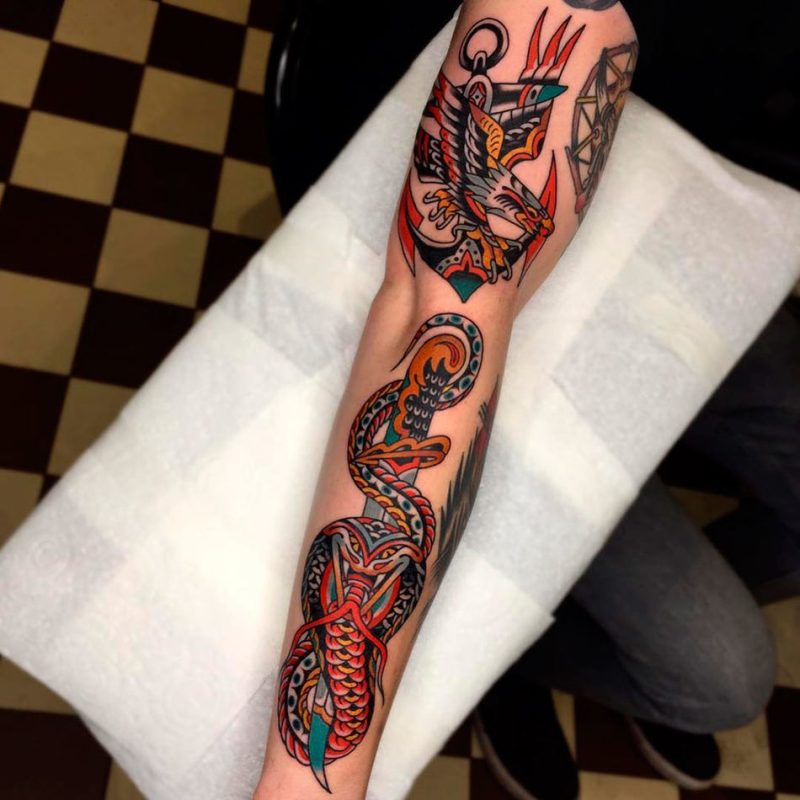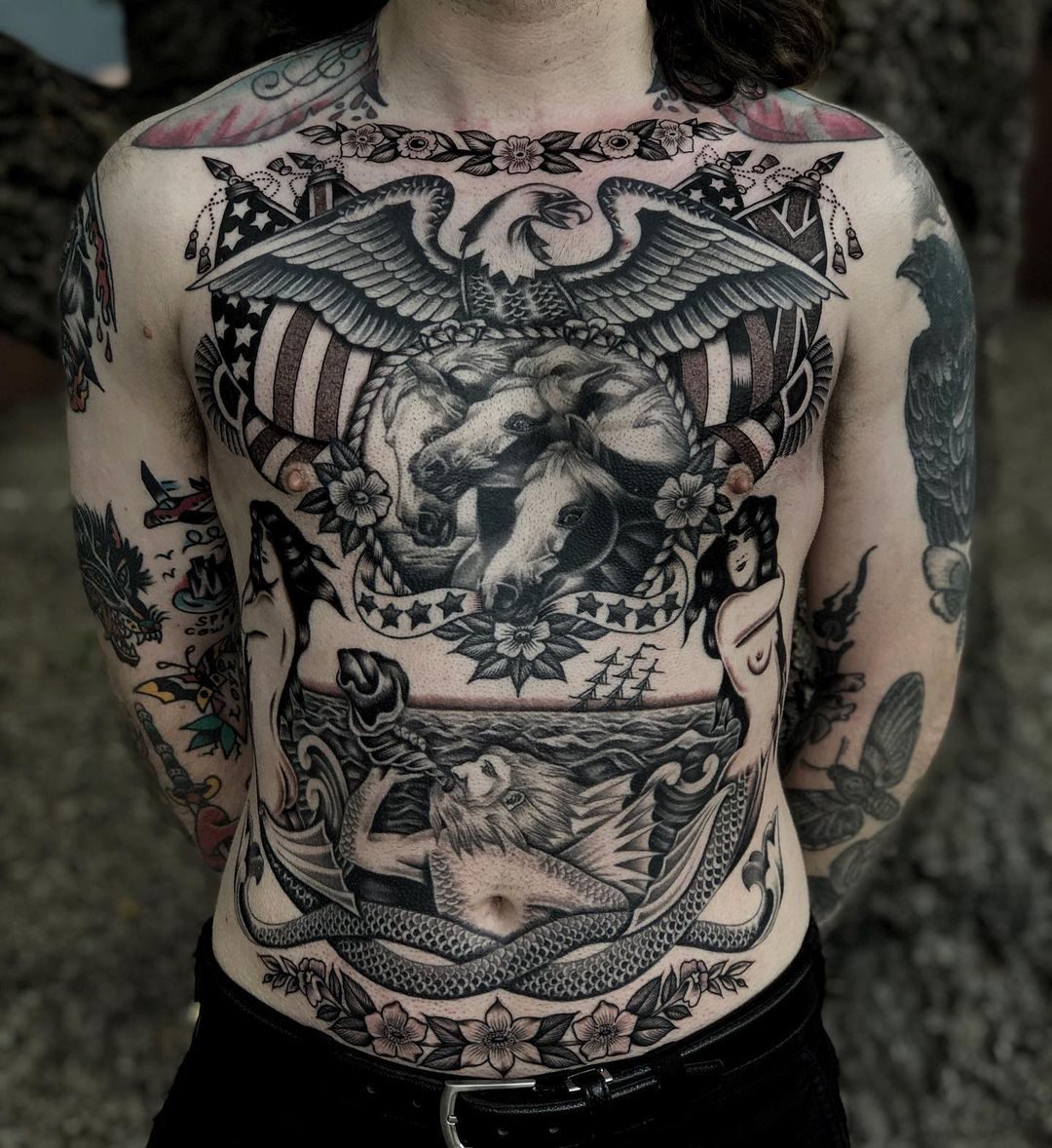
Style Guides: Traditional Tattoos
- Мanagement
- Styles
- Traditional

Explore the history, classic motifs and founding masters of the traditional tattoo style.
- History of traditional tattoo
- Style and technique
- Flash and motives
- Founding artists
Bold black lines depicting a flying eagle, a rose-encrusted anchor, or a ship at sea… these are some of the classic looks that might come to mind when someone mentions a traditional tattoo. Part art movement, part social phenomenon, the United States has succeeded in creating its own style of tattooing. This is a really important aspect of American art and culture, we talk about the history, design and founding artists of this famous tattoo aesthetic.
History of traditional tattoo
To begin with, the traditional tattoo has a basis in many cultures and in many countries.
It is true that sailors and soldiers were among the first Americans to wear tattoos. Part of the tradition of tattooing these soldiers was not only to wear symbols of protection and reminders of their loved ones, but also to mark the body with an identification mark if their life was lost in the war.
Their constant travels to new lands (Japan, we're looking at you!) ensured a cross-cultural experience with new styles and ideas, thus having a direct impact on both flash and the iconography we know and love today.
The electric tattoo machine invented by Samuel O'Reilly revolutionized the industry in 1891. Sam took Thomas Edison's electric pen and modified it to create the forerunner of the machines now used all over the world. By 1905, a man named Lew Alberts, known as Lew the Jew, was selling the first commercial tattoo flash sheets. With the invention of the tattoo machine and flash sheets, the business of tattoo artists grew and the demand for new designs and new ideas became inevitable. Soon this particular style of tattoo spread across borders and states, and as a result, we saw a unified aesthetic of traditional America.
Style and technique
As far as the actual visual style of a traditional tattoo goes, the clean, bold black outlines and the use of solid pigment have a pretty rational use. The fundamental black outlines were a technique taken from the proven methods of tribal tattoo artists belonging to both Polynesians and Indians. Over the centuries, these carbon-based inks have proven to age incredibly well, helping foundations and holding designs in shape.
The set of color pigments that traditional tattooists used was tied largely to what was available when tattoo ink was not only of the highest quality or technological advancement. Often due to lack of demand and lack of demand, the only colors available were red, yellow and green - or ketchup, mustard, seasoning ... as some old-timers would say.
Flash and motives
In 1933, Albert Parry's Tattoos: Secrets of a Strange Art was published and helped take over the growing industry. According to the New York Historical Society, “According to Albert Parry’s book…tattoo artists of the day were so overwhelmed with requests that they had a hard time keeping up with the demand for new designs. But the tattoo exchange вспышка in the late 19th and early 20th centuries, which were mostly distributed along with other supplies through mail order catalogs, helped artists keep up with the growing market.” These flash sheets preserve motifs that artists have been tattooing for decades: religious iconography, symbols of courage and strength, beautiful pin-ups and much more.
Founding artists
There are many people who have helped preserve and popularize the traditional tattoo, including Sailor Jerry, Mildred Hull, Don Ed Hardy, Bert Grimm, Lyle Tuttle, Maud Wagner, Amund Ditzel, Jonathan Shaw, Huck Spaulding, and "Shanghai" Kate Hellenbrand. name a few. Each in their own way, with their own history and skills, helped shape the style, design, and philosophy of American traditional tattooing. While tattoo artists such as Sailor Jerry and Bert Grimm are considered the forefathers of the "first wave" of traditional tattooing, it was the likes of Don Ed Hardy (who studied under Jerry) and Lyle Tuttle who defined the art's public acceptance. the form.
Soon these designs, within what was once considered an underground, low-key art form, graced the mainstream fashion space in the form of Don Ed Hardy's clothing line, which raised and created American (and later worldwide) awareness of the craft and more. influenced him. Traffic.
Today, we know the American traditional tattoo style as time-honored and classic, something that never goes out of style. A simple search on the topic will yield hundreds of thousands of results, which are still often referenced in countless studios around the country.
If you would like to put together your own traditional tattoo, we can help.
Submit your brief to Tattoodo and we'll be happy to connect you with the right artist for your idea!
Leave a Reply